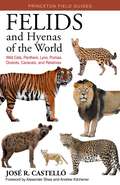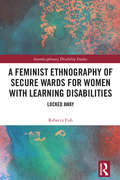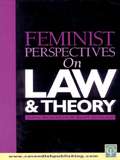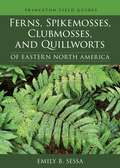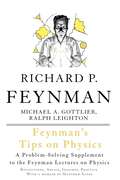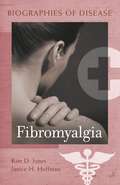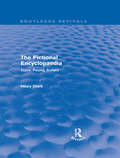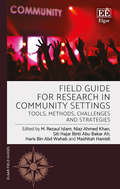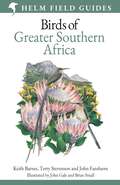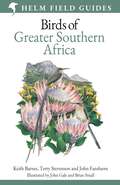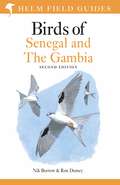- Table View
- List View
Felids and Hyenas of the World: Wildcats, Panthers, Lynx, Pumas, Ocelots, Caracals, and Relatives
by Dr. José R. CastellóThe most comprehensive and user-friendly photographic field guide to the world’s wildcats and hyenasFrom the Leopard Cat of Asia, the Black-footed Cat of Africa, and the Amur Tiger of Siberia to South America’s Ocelots and North America’s Bobcats, the wildcats known as felids are among the most fascinating and spectacular of all animals. This stunningly illustrated book is the most comprehensive and user-friendly guide to the world’s felids and their often misunderstood relative, the hyenas. Covering and illustrating every species and subspecies, the guide features more than 150 superb full-color plates that incorporate more than 600 photographs and show species in similar poses for quick and easy comparison. Drawing on the latest taxonomy and research, the facing-page species accounts provide distribution maps, common and scientific names, and detailed information on key identification features, distribution, behavior, reproduction, similar species, habitat, conservation status, and where to observe each species. An ideal field companion for use anywhere in the world, the book will appeal to both casual nature enthusiasts and seasoned professionals.Covers 41 felids and 4 hyenas—every species and subspecies in the worldFeatures more than 150 color plates incorporating more than 600 photosDepicts species in similar poses for quick and easy comparisonsProvides key identification information in detailed, facing-page species accountsUses the latest taxonomyIncludes easy-to-read distribution maps and tips on where to observe each species
Feminist Approaches to Law: Theoretical and Historical Insights (Gender Perspectives in Law #1)
by Dragica Vujadinović Antonio Álvarez del Cuvillo Susanne StrandThis book raises awareness about gender perspective in political and legal theories and historical analysis. The impacts of feminist political and legal theories, as well as critical legal studies, have been embedded in all the papers in different ways and degrees. Differences among feminist political and legal ideas are visible in the different approaches. The ongoing issue of defining gender, for example, is a recurring theme in the texts. Some papers question the binary basis of the gender issue and the notion of gender as such, while others start from the binary dichotomy and attempt to expand the consideration towards a multi-dimensional understanding of gender identities. The main focus is on a feminist reconsideration of all relevant fields of legal knowledge. The primary aim is to demystify the seemingly neutral character of legal norms and legal knowledge and highlight the power relations at different layers, beginning with male and female legal subjects of Western heredity (in terms of culture, ethnicity, and race), then moving on to different needs and power relations among female persons of different races and classes, and finally addressing differentiating gender relations and identities beyond the framework of the women-men binary codification, i.e., also taking into consideration the multiple options of intersex, transgender, queering, etc. Taking seriously the issue of the “maleness” of political and legal theories is indeed a challenging and relevant endeavor for legal scholars. The male bias is present not only throughout history but also in the present, given that our “universal” categories of political and legal thought are still overburdened by unequal power relations. It is also important to open our minds and knowledge production for a gender-sensitive and gender-competent intersectional approach, which would also include various queer-, race- and class-based considerations. These tasks should be of interest not only to critical legal scholars but also all those belonging to mainstream legal and political thought.
A Feminist Ethnography of Secure Wards for Women with Learning Disabilities: Locked Away (Interdisciplinary Disability Studies)
by Rebecca FishWhat is life like for women with learning disabilities detained in a secure unit? This book presents a unique ethnographic study conducted in a contemporary institution in England. Rebecca Fish takes an interdisciplinary approach, drawing on both the social model of disability and intersectional feminist methodology, to explore the reasons why the women were placed in the unit, as well their experiences of day-to-day life as played out through relationships with staff and other residents. She raises important questions about the purpose of such units and the services they offer. Through making the women’s voices heard, this book presents their experiences and unique perspectives on topics such as seclusion, restraint, and resistance. Exploring how the ever present power disparity works to regulate women’s behaviour, the book shows how institutional responses replicate women’s bad experiences from the past, and how women’s responses are seen as pathological. It demonstrates that women are not passive recipients of care, but shape their own identity and futures, sometimes by resisting the norms expected of them (within allowed limits) and sometimes by transgressing the rules. These insights thus challenge traditional institutional accounts of gender, learning disability and deviance and highlight areas for reform in policy, practice, methodology, and social theory. This ground-breaking book will be of interest to scholars, students, policymakers and advocates working in the fields of learning disability and disability studies more widely, gender studies and sociology.
A Feminist Ethnography of Secure Wards for Women with Learning Disabilities: Locked Away (Interdisciplinary Disability Studies)
by Rebecca FishWhat is life like for women with learning disabilities detained in a secure unit? This book presents a unique ethnographic study conducted in a contemporary institution in England. Rebecca Fish takes an interdisciplinary approach, drawing on both the social model of disability and intersectional feminist methodology, to explore the reasons why the women were placed in the unit, as well their experiences of day-to-day life as played out through relationships with staff and other residents. She raises important questions about the purpose of such units and the services they offer. Through making the women’s voices heard, this book presents their experiences and unique perspectives on topics such as seclusion, restraint, and resistance. Exploring how the ever present power disparity works to regulate women’s behaviour, the book shows how institutional responses replicate women’s bad experiences from the past, and how women’s responses are seen as pathological. It demonstrates that women are not passive recipients of care, but shape their own identity and futures, sometimes by resisting the norms expected of them (within allowed limits) and sometimes by transgressing the rules. These insights thus challenge traditional institutional accounts of gender, learning disability and deviance and highlight areas for reform in policy, practice, methodology, and social theory. This ground-breaking book will be of interest to scholars, students, policymakers and advocates working in the fields of learning disability and disability studies more widely, gender studies and sociology.
Feminist Perspectives on Law and Theory (Feminist Perspectives)
by Janice Richardson Ralph SandlandWhat is the link between the way in which women are viewed as an aberration within law - such that pregnant women initially had to be compared with sick men to claim unfair dismissal - and the view of women as monstrous within philosophy? This book uses the failure of women to fit within male models of both law and theory as a way to rethink legal questions,including the meaning of equality, freedom, justice and citizenship. This includes concern about the way in which queer theory and critical race theory - as well as issues of class - intersect with feminist theory today. It also raises issues about the relationship between political theory and practice and the productive intersection between debates within law, philosophy and feminism. This collection of essays on feminist legal theory therefore provides an interdisciplinary approach, drawn not only from law and philosophy, but also from cultural and womens studies. Feminism may still be on the margins of both law and philosophy, yet it has the ability to disrupt both. This book moves beyond a feminist critique of existing frameworks to the constructive project of reworking theory from within. It goes beyond debates of traditional jurisprudence to draw its tools from the growing body of work on feminist philosophy - including the writings of Luce Irigaray, Drucilla Cornell and Christine Battersby - which intersect both contemporary continental philosophy and critical legal theory.
Feminist Perspectives on Law and Theory (Feminist Perspectives)
by Janice Richardson Ralph SandlandWhat is the link between the way in which women are viewed as an aberration within law - such that pregnant women initially had to be compared with sick men to claim unfair dismissal - and the view of women as monstrous within philosophy? This book uses the failure of women to fit within male models of both law and theory as a way to rethink legal questions,including the meaning of equality, freedom, justice and citizenship. This includes concern about the way in which queer theory and critical race theory - as well as issues of class - intersect with feminist theory today. It also raises issues about the relationship between political theory and practice and the productive intersection between debates within law, philosophy and feminism. This collection of essays on feminist legal theory therefore provides an interdisciplinary approach, drawn not only from law and philosophy, but also from cultural and womens studies. Feminism may still be on the margins of both law and philosophy, yet it has the ability to disrupt both. This book moves beyond a feminist critique of existing frameworks to the constructive project of reworking theory from within. It goes beyond debates of traditional jurisprudence to draw its tools from the growing body of work on feminist philosophy - including the writings of Luce Irigaray, Drucilla Cornell and Christine Battersby - which intersect both contemporary continental philosophy and critical legal theory.
Feminist Phenomenology (Contributions to Phenomenology #40)
by LesterEmbree LindaFisherThis volume is composed chiefly of papers first presented and discussed at the Research Symposium on Feminist Phenomenology held November 18-19, 1994 in Delray Beach, Florida. Those papers have been revised and expanded for publication in the present volume and several essays have been added. We would like to thank very much all the participants in the symposium, including the session chairs and others in attendance, whose interest and enthusiasm contributed greatly. The symposium and this volume, including the name for it, were conceived of by Lester Embree, who also arranged sponsorship, local arrangements, and publication through the William F. Dietrich Eminent Scholar Chair at Florida Atlantic University and the Center for Advanced Research in Phenomenology, Inc. The invitees were decided upon jointly. Linda Fisher has been chiefly responsible for the editing and the preparation of the camera-ready copy. Linda Fisher Lester Embree Acknowledgments The editing and preparation of this volume has spanned several cities and two continents and I am indebted to many people from each place.
Feminist Philosophy of Technology (Techno:Phil – Aktuelle Herausforderungen der Technikphilosophie #2)
by Mark Coeckelbergh Janina LohThere has been little attention to feminism and gender issues in mainstream philosophy of technology and vice versa. Since the beginning of the so-called »second wave feminism« (in the middle of the 20th century), there has been a growing awareness of the urgency of a critical reflection of technology and science within feminist discourse. But feminist thinkers have not consistently interpreted technology and science as emancipative and liberating for the feminist movement. Because technological development is mostly embedded in social, political, and economic systems that are patriarchally hierarchized, many feminists criticized the structures of dominance, marginalization and oppression inherent in numerous technologies. Therefore, the question of defining and ascribing responsibility in technics and science is essential for this anthology – regarding for instance the technological transformation of labor, the life in the information society, and the relationship between humans and machines.
Feminists in Politics: A Panel Analysis of the First National Women's Conference
by Alice S. RossiFeminists in Politics: A Panel Analysis of the First National Women's Conference provides a systematic study of the impact of the National Women’s Conference held in Houston, Texas, in November 1977, on the participants. It traces the past political activities of the conference participants; what they actually did during the conference; the impact of the conference on their commitment to political action in the future; and their aspirations for holding elected office in American politics or in organizations associated with the feminist movement. The volume begins by placing the IWY Commission and the study of the conference in the context of feminist history—both the long-term history that reaches back to Seneca Falls in 1848 and the short-term history of more recent post-1965 political developments. Subsequent chapters deal with design, variable measurement, and response pattern analysis; political organization and group formation; the differences between Pro-Plan and Anti-Plan activists at the conference; and the past political development of the delegates and their political aspirations. This impact analysis will be of interest to political scientists and sociologists, as well as to political activists concerned with the efficacy of alternative action strategies.
Ferns, Spikemosses, Clubmosses, and Quillworts of Eastern North America (Princeton Field Guides #150)
by Emily SessaA comprehensive, richly illustrated photographic field guide to the ferns and lycophytes of the eastern United States and CanadaThis is a comprehensive photographic field guide to the ferns, spikemosses, clubmosses, and quillworts of eastern North America. Accessible yet scientifically accurate, the book will appeal to beginners and experts alike and enhance the field experience of any user.Keys, range maps, detailed color photographs, and facing-page species descriptions aid exploration and allow reliable identification of all 305 species found in the area covered by the book—the United States east of the Mississippi and contiguous Canada, except for extreme northern and northeastern Canada. An introduction provides an easy-to-understand overview of identifying characteristics, life cycles, and evolutionary history. Checklists allow readers to record species they have seen, in four subregions. Indexes feature a complete list of common and scientific names, including synonyms, ensuring that users can find the plants they are looking for and keep track of changes in taxonomy. In addition, information about hybrids, polyploids, and reticulate relationships is provided, illuminating the fascinating processes that have led to such a rich diversity of species.Modern and innovative, this is the definitive guide to the ferns and lycophytes of eastern North America.Covers all 305 species, belonging to 96 genera and 30 familiesFeatures detailed color photos of all species—and facing-page species descriptionsProvides checklists for keeping track of species seenIncludes common and scientific names and notable synonyms
Ferri's Differential Diagnosis E-Book: A Practical Guide to the Differential Diagnosis of Symptoms, Signs, and Clinical Disorders (Ferri's Medical Solutions)
by Fred F. FerriFerri’s Differential Diagnosis is a quick reference to the differential diagnosis, etiology, and classification of clinical disorders, signs, and symptoms. Dr. Fred F. Ferri—the respected best-selling author—presents over 1000 signs, symptoms, and clinical disorders. Comprehensive yet small enough to fit in your pocket, this portable guide is a rapid resource for everything you see in daily practice—from abdominal distension to Zenker’s Diverticulum.Quickly locate the information you need with an organization that presents differential diagnosis by sign and symptom as well as disorder. Easily identify the likeliest diagnosis through diagnostic possibilities listed in order of incidence. Tap into the authoritative guidance of Dr. Fred Ferri, the respected expert responsible for best-selling titles such as Ferri’s Clinical Advisor, Ferri’s Fast Facts, and Practical Guide to the Care of the Medical Patient. Apply the differential diagnosis of over 100 new signs, symptoms, and clinical disorders.
Ferri's Fast Facts in Dermatology E-Book: A Practical Guide to Skin Diseases and Disorders (Ferri's Medical Solutions)
by Fred F. Ferri James S. Studdiford Amber S. TullyWritten by renowned author Fred F. Ferri, MD, FACP, and featuring high-quality images from Drs. Studdiford and Tully - faculty members at Jefferson Medical College, Ferri’s Fast Facts in Dermatology presents "need-to-know" information on nearly 200 dermatologic disorders. Each topic includes color images displaying the disease, and the accompanying bulleted text provides an at-a-glance view. This useful, clinical resource helps you hone your developing diagnostic skills and sharpen your clinical acumen. Its concise, user-friendly format lets you get to the information you need fast, and its convenient size makes reference a snap. Covers nearly 200 disorders that help you better diagnose and recognize the most common dermatologic diseases. Includes high-quality full-color images that provide optimal visual guidance for diagnoses. Presents a consistent organization for each disorder that includes Definitions, Etiology, Clinical Manifestations, Physical Examination, Diagnostic Tests, Differential Diagnosis, Treatment, and Clinical Pearls. Uses bulleted text that makes reference easy. Comes in a convenient 4" x 6" format for on-the-go reference. Makes the perfect study or review tool for exams for students or a focused point-of-care reference for residents and practitioners of all levels.
Feynman's Lost Lecture: The Motions of Planets Around the Sun
by David L Goodstein Judith R GoodsteinOn 14 March 1964 Richard Feynman, one of the greatest scientific thinkers of the 20th Century, delivered a lecture entitled 'The Motion of the Planets Around the Sun'. For thirty years this remarkable lecture was believed to be lost. But now Feynman's work has been reconstructed and explained in meticulous, accessible detail, together with a history of ideas of the planets' motions. The result is a vital and absorbing account of one of the fundamental puzzles of science, and an invaluable insight into Feynman's charismatic brilliance.
Feynman's Tips on Physics: Reflections, Advice, Insights, Practice
by Richard P. Feynman Michael A GottliebFeynman's Tips on Physics is a delightful collection of Richard P. Feynman's insights and an essential companion to his legendary Feynman Lectures on Physics With characteristic flair, insight, and humor, Feynman discusses topics physics students often struggle with and offers valuable tips on addressing them. Included here are three lectures on problem-solving and a lecture on inertial guidance omitted from The Feynman Lectures on Physics. An enlightening memoir by Matthew Sands and oral history interviews with Feynman and his Caltech colleagues provide firsthand accounts of the origins of Feynman's landmark lecture series. Also included are incisive and illuminating exercises originally developed to supplement The Feynman Lectures on Physics, by Robert B. Leighton and Rochus E. Vogt.Feynman's Tips on Physics was co-authored by Michael A. Gottlieb and Ralph Leighton to provide students, teachers, and enthusiasts alike an opportunity to learn physics from some of its greatest teachers, the creators of The Feynman Lectures on Physics.
Fibromyalgia (Biographies of Disease)
by Kim D. Jones Janice H. HoffmanA fascinating look at the progression of a once-discounted medical disorder, from suspicion of malingering and mental illness to mainline acceptance by the world medical community.As described in this timely volume, three decades of objective scientific evidence has finally transitioned a suspicious set of symptoms into a real diagnosis for—and potential treatments of—fibromyalgia. It is a revelatory work, focusing on important research discoveries, the struggles of patients, and hopes for a future cure.Each chapter of Fibromyalgia covers different aspects of the disease and its treatment, including global, economic, and risk statistics; a timeline of key events in the study of fibromyalgia; common symptoms and diagnostic indicators; pharmacologic and non-pharmacological treatments; associated disorders and syndromes; and impact of fibromyalgia at home, in the workplace, and in society at large. Adding to the coverage is a firsthand account from a young patient describing her experiences with this disease.
The Fictional Encyclopaedia: Joyce, Pound, Sollers (Routledge Revivals)
by Hilary ClarkFirst published in 1990, this work offers an analysis of the phenomenon of encyclopaedism in literature. Hilary Clark develops the theory of an encyclopaedic form in the interests of making clear distinctions between the realist narrative form and that of the encyclopaedic-parodic or fictional encyclopaedia. She makes clear the special links that non-realist, parodic fictions have with the forms of essay, Menippean satire and epic, and indeed with the encyclopaedia itself. The study pays particular attention to the way in which literary encyclopaedism has flourished in the twentieth century, with special reference to the works of James Joyce, Ezra Pound and Philippe Sollers.
The Fictional Encyclopaedia: Joyce, Pound, Sollers (Routledge Revivals)
by Hilary ClarkFirst published in 1990, this work offers an analysis of the phenomenon of encyclopaedism in literature. Hilary Clark develops the theory of an encyclopaedic form in the interests of making clear distinctions between the realist narrative form and that of the encyclopaedic-parodic or fictional encyclopaedia. She makes clear the special links that non-realist, parodic fictions have with the forms of essay, Menippean satire and epic, and indeed with the encyclopaedia itself. The study pays particular attention to the way in which literary encyclopaedism has flourished in the twentieth century, with special reference to the works of James Joyce, Ezra Pound and Philippe Sollers.
Fictional Worlds and Philosophical Reflection
by Garry HagbergThis edited collection investigates the kinds of philosophical reflection we can undertake in the imaginative worlds of literature. Opening with a look into the relations between philosophical thought and literary interpretation, the volume proceeds through absorbing discussions of the ways we can see life through the lens of literature, the relations between philosophical saying and literary showing, and some ways we can see the literary past philosophically and assess its significance for the present. Taken as a whole, the volume shows how imagined contexts can be a source of knowledge, a source of conceptual clarification, and a source of insight and understanding. And because philosophical thinking is undertaken, after all, in words, a heightened sensitivity to the precise employments of our words – particularly philosophically central words such as truth, reality, perception, knowledge, selfhood, illusion, understanding, falsehood – can bring a clarity and a refreshed sense of the life that our words take on in fully-described contexts of usage. And in these imagined contexts we can also see more acutely and deeply into the meaning of words about words – metaphor and figurative tropes, verbal coherence, intelligibility, implication, sense, and indeed the word “meaning” itself. Moving from a philosophical issue into a literary world in which the central concepts of that issue are in play can thus enrich our comprehension of those concepts and, in the strongest cases, substantively change the way we see them. With a combination of conceptual acuity and literary sensitivity, this volume maps out some of the territory that philosophical reflection and literary engagement share.
Field Guide for Research in Community Settings: Tools, Methods, Challenges and Strategies (Elgar Field Guides)
This insightful book offers practical advice to fieldworkers in social research, enabling robust and judicious applications of research methods and techniques in data collection. It also outlines data collection challenges that are commonly faced when working in the field. Authors address key strategies to tackle the major challenges to fieldwork, including advice on using indigenous or innovative skills and making intelligent use of the advantages already available within standard research methodologies. International contributors provide a hands-on account of research methodologies as applied in the field, with particular focus on research ethics and community culture and interactions. The book offers a number of useful case studies, featuring examples of the application of research techniques in different cultural and socio-economic contexts. Utilizing an innovative and dynamic ‘storytelling’ method, this book will be a useful research tool for fieldworkers engaging in social science research in community settings, as well as students in the field learning the core techniques of fieldwork.
Field Guide to Birds of Greater Southern Africa (Helm Field Guides)
by Mr Keith Barnes Terry Stevenson John FanshaweThis spectacular field guide includes all resident, breeding and migrant species found in Greater Southern Africa.Comprising South Africa, Lesotho, eSwatini, Namibia, Botswana, Zimbabwe, Malawi, Mozambique and Zambia, Greater Southern Africa is a vast region home to a truly extraordinary diversity of avifauna.The latest in the Helm Field Guide series, Birds of Greater Southern Africa describes all 1,170 regularly occurring species that are likely to be encountered in the region, from the Wandering Albatross to the Pennant-winged Nightjar. Featuring 272 colour plates by three of the world's leading bird illustrators, this practical guide also includes concise species accounts describing key identification features, status, range, habitat and voice; distribution maps for each species are also included.Fully illustrated throughout, this is an essential reference guide for anyone visiting or living in this wildlife-rich area.
Field Guide to Birds of Greater Southern Africa (Helm Field Guides)
by Mr Keith Barnes Terry Stevenson John FanshaweThis spectacular field guide includes all resident, breeding and migrant species found in Greater Southern Africa.Comprising South Africa, Lesotho, eSwatini, Namibia, Botswana, Zimbabwe, Malawi, Mozambique and Zambia, Greater Southern Africa is a vast region home to a truly extraordinary diversity of avifauna.The latest in the Helm Field Guide series, Birds of Greater Southern Africa describes all 1,170 regularly occurring species that are likely to be encountered in the region, from the Wandering Albatross to the Pennant-winged Nightjar. Featuring 272 colour plates by three of the world's leading bird illustrators, this practical guide also includes concise species accounts describing key identification features, status, range, habitat and voice; distribution maps for each species are also included.Fully illustrated throughout, this is an essential reference guide for anyone visiting or living in this wildlife-rich area.
Field Guide to Birds of Senegal and The Gambia: Second Edition (Helm Field Guides)
by Nik Borrow Ron DemeyThis comprehensive and fully updated edition of Birds of Senegal and The Gambia is the ultimate guide for travellers and birdwatchers visiting one of Africa's richest birdwatching regions. The Gambia, together with the country that envelops it, Senegal, has an avifauna of more than 700 regularly occurring species, including many Western Palearctic migrants from September to April, and a significant list of highly sought-after resident West African birds, including the Egyptian Plover. This authoritative guide covers all species, including details of all residents, migrants and known vagrants. Senegal and The Gambia offer a true wealth of birdlife, including a fantastic selection of Sahel specialities that are far more easily seen here than anywhere else. Senegal has become a reliable locality for Golden Nightjar, Quail-plover and Cricket Warbler, and the near-endemic Mali Firefinch occurs in the southeast of the country. Birdwatchers in this region can also find Savile's Bustard, Adamawa Turtle Dove, Little Grey Woodpecker, Yellow Penduline Tit, Sudan Golden Sparrow and Exclamatory Paradise Whydah, while the Saloum delta's huge roost of tens of thousands of African Swallow-tailed Kites is one of the world's top birding spectacles. More than 140 stunning colour plates depict every species and also comprehensively cover all the distinct plumages and subspecies likely to be encountered. Concise species accounts describe key identification features, status, range, habitat and voice, with fully updated distribution maps for each species. This compact guide is an essential companion for any birder visiting this rich and varied area of Western Africa.
Field Guide to Birds of Senegal and The Gambia: Second Edition (Helm Field Guides)
by Nik Borrow Ron DemeyThis comprehensive and fully updated edition of Birds of Senegal and The Gambia is the ultimate guide for travellers and birdwatchers visiting one of Africa's richest birdwatching regions. The Gambia, together with the country that envelops it, Senegal, has an avifauna of more than 700 regularly occurring species, including many Western Palearctic migrants from September to April, and a significant list of highly sought-after resident West African birds, including the Egyptian Plover. This authoritative guide covers all species, including details of all residents, migrants and known vagrants. Senegal and The Gambia offer a true wealth of birdlife, including a fantastic selection of Sahel specialities that are far more easily seen here than anywhere else. Senegal has become a reliable locality for Golden Nightjar, Quail-plover and Cricket Warbler, and the near-endemic Mali Firefinch occurs in the southeast of the country. Birdwatchers in this region can also find Savile's Bustard, Adamawa Turtle Dove, Little Grey Woodpecker, Yellow Penduline Tit, Sudan Golden Sparrow and Exclamatory Paradise Whydah, while the Saloum delta's huge roost of tens of thousands of African Swallow-tailed Kites is one of the world's top birding spectacles. More than 140 stunning colour plates depict every species and also comprehensively cover all the distinct plumages and subspecies likely to be encountered. Concise species accounts describe key identification features, status, range, habitat and voice, with fully updated distribution maps for each species. This compact guide is an essential companion for any birder visiting this rich and varied area of Western Africa.
Field Guide To The Birds Of South-East Asia (Field Guide To)
by Craig RobsonThis is the first-time flexi-cover edition of this classic field guide, which is the definitive volume on the region's birdlife. This award-winning book, which was first published in 2000, was fully updated in 2009 to include 76 new species for the region that were recent new discoveries for science, taxonomic 'splits' or had been recorded there for the first time. This comprehensive field guide to the birds of South-East Asia covers all of the 1,327 species recorded in the region and each has been fully illustrated. This edition has many new artworks and 16 more colour plates than the original guide, and the text has been meticulously updated to take in all the most recent information. The vast diversity of South-East Asian birdlife attracts increasing numbers of birdwatchers each year. Covering Thailand, Vietnam, Singapore, Peninsular Malaysia, Myanmar, Laos and Cambodia, this unique and indispensable guide covers in detail the identification, voice, breeding, status, habitat and distribution of all the species and distinctive subspecies of the region.
